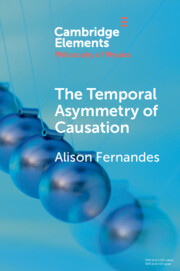Element contents
The Temporal Asymmetry of Causation
Published online by Cambridge University Press: 10 May 2023
Summary
- Type
- Element
- Information
- Online ISBN: 9781108914765Publisher: Cambridge University PressPrint publication: 01 June 2023
References
- 6
- Cited by



